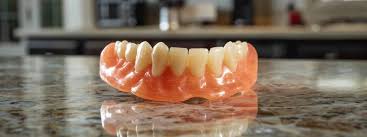Dental patients exploring options for replacing missing teeth may compare dental implants and traditional dentures. Each solution offers specific advantages and distinct characteristics. Understanding the differences can help patients make informed choices based on their unique needs and preferences.
What Are Dental Implants?
Dental implants are artificial tooth roots made from titanium or ceramic materials. They are inserted into the jawbone and used as a stable foundation for fixed or removable replacement teeth. Once placed, a connector piece (abutment) attaches to the implant, securing the artificial tooth in position.
Implants are designed to look and function much like natural teeth. Their integration with the bone provides stability and support for chewing and speaking. Patients may select implants for their durability and resemblance to natural teeth.
What Are Traditional Dentures?
Traditional dentures are removable appliances that replace missing teeth and surrounding tissues. Dentures are typically made from acrylic resin and may include metal attachments for added support and stability. They rest on top of the gums and are held in place by suction, adhesives, or clips. Dentures come in two main types: complete dentures for those missing all their teeth, and partial dentures for those missing some.
How Are They Different?
Dental implants and traditional dentures differ in terms of materials, placement, and the method of support. Implants are anchored directly into the jawbone, offering a fixed and stable base that allows for greater bite strength during eating and speaking. Dentures rest on the surface of the gums and rely on adhesives or the shape of the mouth for retention. This difference often affects comfort and stability, especially when eating chewy or hard foods.
What Does the Implant Process Involve?
The dental implant process consists of several stages. A comprehensive assessment and imaging are used to evaluate bone structure and suitability for implants. The implant is surgically placed into the bone and given time to integrate, usually over a few months. This process is called osseointegration and establishes a solid anchor for the prosthetic tooth.
A follow-up procedure attaches the abutment, and then a custom-made crown or bridge is fitted. Every step requires collaboration between dental professionals, careful planning, and clear communication with patients. Healing time varies, but patients can usually return to their regular routines shortly after implant placement.
What Are the Benefits of Implants Over Dentures?
Patients may note several advantages of dental implants compared to traditional dentures. Implants remain securely in place, which can enhance functionality during activities like eating and speaking. This stability can lead to improved comfort in both social and professional settings.
Dental implants are also designed to support bone structure, which can help maintain the shape of the jaw and face over time. Traditional dentures may require frequent readjustments, while implants offer a long-term solution that more closely mimics the function and appearance of natural teeth. Patients may find maintaining implants straightforward, with no need for adhesives or removal during cleaning.
Seek Expert Guidance Today
Deciding between dental implants and traditional dentures requires careful evaluation of personal health, preferences, and lifestyle. Consulting with a dental professional offers clarity on available options and insights tailored to individual needs. Schedule a consultation to receive guidance on choosing the most suitable treatment for lasting oral health and function.

